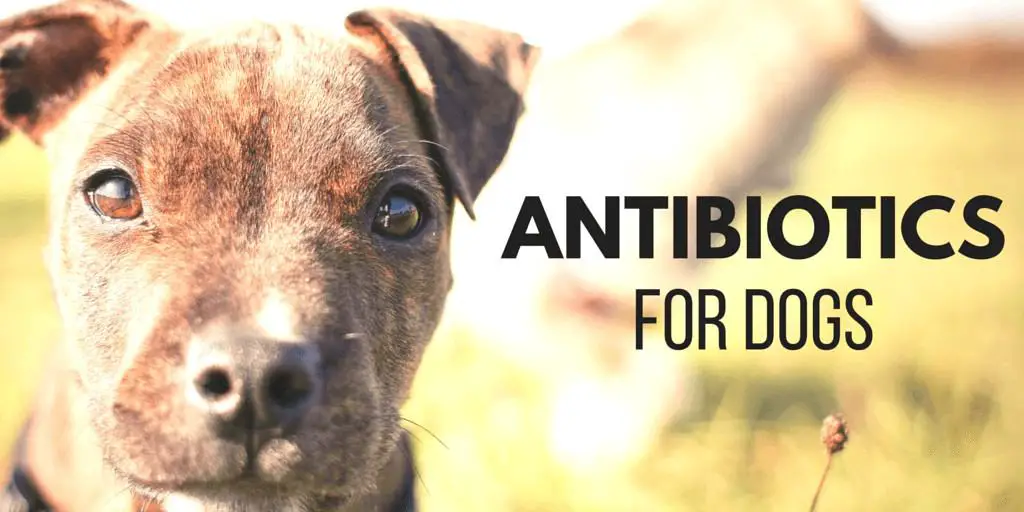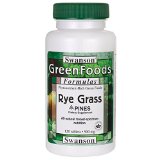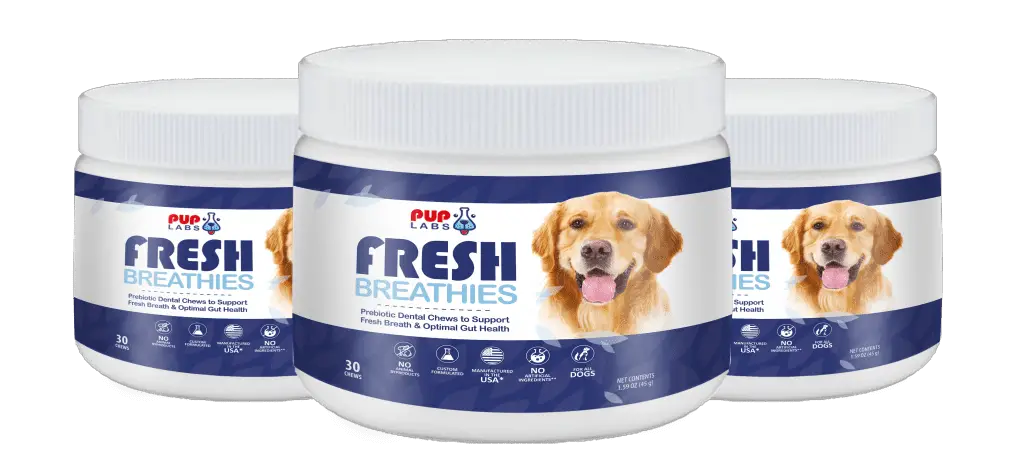Canine Antibiotics
| Best Antibiotics for Dogs | Natural? | Type | Price |
|---|---|---|---|
| Vibactra | Yes | Drops | $$ |
| FishMoxy | No | Pills | $$ |
| Brewer's Yeast Powder (Gmo-Free) | Yes | Powder | $ |
| Rye Grass | Yes | Pills | $ |
| Fresh Garlic | Yes | Whole Garlic | $ |
When your dog is unwell, a trip to the veterinarian is sometimes required. In most cases hopefully your dog will manage to recover without any major medical interference.
But in some instances, a little help is required to get your fluffy friend back on the road to recovery.
Some of the most common reasons for a Vet to prescribe antibiotics for your pet include; gastric infections, chest or respiratory infections, eye infections, ear infections, and skin infections.
As is the same in human medicine, antibiotics for dogs work by attacking the bacteria which is causing the infection, or by impeding the spread of the infection, to allow your dog’s natural body defenses’ to build resistance.
It is common for antibiotics to start to improve the health of your dog within 24 to 48 hours after the first dose, and your dog’s health should continue to improve with each subsequent dose.
It is crucial however to complete the full course of any prescribed antibiotics for your dog unless advised by your vet to stop.
If you stop the course of medication too soon, your dog could become unwell again.
The antibiotics could be less effective if a second course of medication is required as the bacteria can become resistant to the drugs.
What Dog Antibiotics Can Treat
In general, there are four types of germs that can cause infection internally or externally on your dog’s body.
These tiny microbes include fungi, viruses, bacterial infections, and parasites. For any treatment to be successful, the veterinarian needs to find out what is causing your dog to be unwell, so the correct type of medication can be prescribed.
To enable the correct diagnosis sometimes it is necessary to take a small blood sample for testing but in a large number of cases the vet has enough knowledge and experience to know which type of antibiotic is the correct one to get on top of the infection.
The symptoms your dog is displaying are typical of the characteristics of these infections; certain infections are known to cause certain symptoms, thus ruling out other types of infections.
For example, if your pet has skin or ear yeast infections or ringworm, these are fungal infections.
These minute bacteria feed off your pet’s cells and destroy the new cells as they grow, thus providing a source of food as the cells waste away.
This circle will continue until the correct pet antibiotic is given which will kill the parasite and the allow your dog’s body tissue or cells to recover.
Pet antibiotics usually also contain other medicines to help make your dog feel better and more comfortable whilst undergoing the treatment.
When to Use Antibiotics on Your Dog
When your dog is feeling poorly, it can be very upsetting for both your pup and you, and it’s very usual to ask, “where did my dog pick up this infection?”
The more obvious infections are those from open wounds, such as cuts and grazes caused whilst playing or running through parks and trails.
Even a tiny cut needs to be looked after to prevent infection. If your dog has a mild injury, such as a scratch or graze, you should gently clean it with a saline solution.
If in doubt about whether your pet may need treatment then take a trip to your veterinarian surgery.
Keeping wounds clean, away from lapping tongues and scratching paws is a real challenge but at least you have a good visual of what’s going on!
Where it’s much harder to see what the cause of your dog’s illness is, is when they have a respiratory infection or gastrointestinal infection, basically, anything going on, on the inside.
These types of illnesses can be picked up in much the same way as we get sick; passed through the air, through the environment, from another pet who is already unwell, or if your pet’s general immune system is low, allowing it to be prone to picking up illnesses.
This is where you are reliant on the expertise of the vet, who will determine through tests and find out through the symptoms what type of illness your poorly pup has, and therefore what the best antibiotics for your dog are.
Amoxicillin for Dogs
Amoxicillin is an antibiotic medicine used to treat common bacterial infections in dogs. These include infections of the skin and tissue (including wounds), along with respiratory infections and gastrointestinal infections.
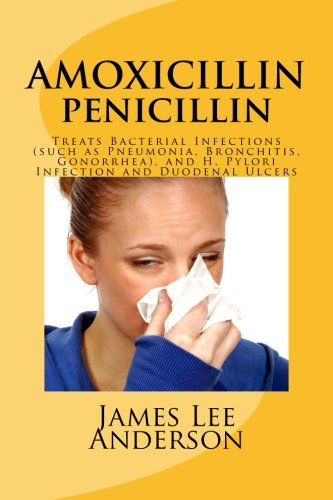
Amoxicillin is also prescribed for us humans, however, you should never self-diagnose your pet and be aware that dosages vary considerably for animals in comparison to humans.
A course of this antibiotic for your dog will be 7-10 days and the course should be completed, unless advised otherwise by your vet, as symptoms will disappear before the course is complete.
Certain types of bacteria are able to build up a resistance to Amoxicillin and so another medicine may be prescribed alongside this one to give complete treatment to your pet.
How does Amoxicillin work? It works by preventing the bacteria cells from being able to generate properly. They can’t complete the cell wall structure and so they become unstable and unable to survive.
Amoxicillin is not suitable for the treatment of viral or parasitic infections.
Amoxicillin Dosage for Dogs
If you think your dog is unwell enough to need antibiotics you should take them to the veterinarian. It is not safe or recommended that you diagnose or self-medicate your pet.
As an indication of the dosage that your vet will provide, the table below will allow you to check the dosage prescribed to your dog, by your vet.
The guidelines state that 5 mg per lb. body weight should be given twice daily for 5 to 7 days or for 48 hours after symptoms subside.
| Weight of Dog (Lbs.) | Dosage |
| 10 | 1x 50 mg |
| 15 | ½ x 150mg |
| 20 | 1x 100mg |
| 30 | 1 x 150mg |
| 40 | 1x 200mg |
| 60 | 2 x 150mg |
| 80 | 1x 400mg |
| 80> | As advised by Veterinarian |
Amoxicillin is available as a liquid medicine or tablet-based capsule.
Penicillin for dogs
Many vets will prescribe penicillin for your dog, and it is the same penicillin that is used for us humans too. As a prescribed drug, its use is closely monitored, and it cannot be purchased without a script.
Even though it’s the same medicine as used by us, the rules stand that you should never give your pet your medicine. If you think your dog is ill then take it to a veterinarian for advice, guidance, and its own medicine.
Natural Antibiotics for Dogs
If you are hesitant in giving your dog a medically prescribed antibiotic, then there are alternative treatments for your dog… Natural antibiotics for dogs!
Firstly, why would you not want to use medicinal antibiotics?
- They kill bad bacteria but also GOOD bacteria too that is vital for a healthy digestive system.
- There is a chance of digestive disorders
- There is a chance of disease within the intestinal tract
- There is a risk of allergy
- The risk of resistance to medicinal antibiotics
All natural antibiotics have been used for centuries and are an effective and inexpensive method of treating diseases in dogs.
Brewers Yeast
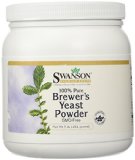
It is also recommended to buy the highest quality liquid yeast, as this will have least intolerances.
Signs of intolerance include; refusing to eat food, vomiting, and loose stools. If these symptoms occur cease use of the yeast product and wait several weeks before attempting to re-try the yeast again.
Wheat and Rye Grass
In nature, when a dog is feeling poorly it will seek out grass to eat… it’s rich in nutrients and has detoxification properties that your clever canine already seems to know about!
Strangely, dogs can’t actually digest grass too well, particularly rye, wheat, and barley grasses.
If you are giving your dog grass as a natural remedy then you could consider adding in a supplement of powdered grass to mix with their diet.
This would allow your dog the benefits of the nutrient-rich grasses, along with the detoxification benefits, but with fewer digestive problems.
Garlic
The medicinal powers of garlic have been documented for centuries, not just for people but for our animals too.
Despite the many, many articles written warning that Garlic is a toxin to your dog, it isn’t and here’s why…
- Garlic is high in Vitamin A, Vitamin C, Calcium, Complex B Vitamins, magnesium, and many more.
- Garlic detoxifies the body and helps your dog’s good bacteria to flourish and eliminate bad bacteria
- Garlic helps to open up the blood vessels and helps to prevent blood clots (which are always a worry in older dogs)
- Garlic helps the liver to cleanse the waste out of your dog’s body more easily.
- Garlic has shown signs of enhancing your dog’s natural killer cells in the fight against cancer.

The only way to serve Garlic to your pet is FRESH AND RAW and preferably organically grown. It should be removed from its husk only 10-15 minutes before you feed it to your dog. Please do NOT use any garlic substitute or from a jar.
Canine Probiotics
As you wander around the supermarket or grocery store and you’re picking up your own probiotic drinks, the ones that keep your tummy healthy and boost the good bacteria in your body, why not take a look at Probiotic supplements for your furry friend too?
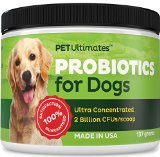
Probiotics inhibit the development of harmful bacteria such as E.coli, and Salmonella. They boost the immune system and can assist digestion.
Some studies in humans have shown certain strains of probiotic can improve irritable bowel syndrome and inflammation of the intestine, and, although there are fewer studies of how this affects our dogs, there is no reason not to consider the benefits to be the same.
The use of probiotics to help reduce or eliminate allergic reactions has also been recorded, by the soothing and healing cell generation within the gut.
Specifically, the Probiotic Strain AHC7 (for dogs) has been shown to significantly reduce the extent of severe diarrhea. It has also been shown to help bring relief to dogs suffering from sensitive digestion and stool problems.
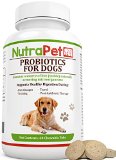
If your aim is to help your dog’s digestion, then you should give them with your dog’s meal. They can be added as a powder supplement or as an oral supplement.
If however you want to benefit in general from the health properties of Probiotics then it is advisable to give the supplement between meals, as it stays in the stomach longer.
Probiotics are not restricted for use in the long term.
Can Dogs Take Amoxicillin?
Pet Amoxicillin is a specific medicine for your dog, it is not the same as the medicine your pharmacist dispenses to you and you should NEVER give your pet any human drug, even if you think it’s the same.
Pet Amoxicillin is suitable for treating the most common bacterial infections that your dog may encounter as it grows up and has many adventures… from cuts and grazes to sore ears and dental problems.
Amoxicillin is the go to number one antibiotic used by veterinarians for any non-viral infection.
Today’s Amoxicillin is the modern day equivalent of Penicillin. When it was first developed during World War 2 it was a breakthrough drug, but was quick to dispel from the body and could not withstand acid from the stomach.
Science has refined that original product and it is now much more sustainable in the body, lasting longer and giving better protection against bacteria.
The same standards apply to Amoxicillin for dogs and your dog most certainly can take, and enjoy the relief and benefits from this germ-busting drug.
FAQS
Can Dogs Take Bactrim?
Yes. According to this study, Bactrim has a very low rate of “reaction incidence” in canines.
As with all things of this nature, the age and breed of your dog will play a factor and therefore you should consult your vet before starting any treatment.
What Kind of Antibiotics can Dogs Take?
Here is the best information I could find on this:
Common antibiotic medications for pets include:
– Enrofloxacin (Baytril) – respiratory, skin, and urinary tract infections
– Amoxicillin/Clavulanic acid (Clavamox) – wounds, respiratory infections, skin infections
– Metronidazole (Flagyl) – gastrointestinal upsets, periodontal disease
– Clindamycin (Antirobe) – bacterial, soft tissue, bone, and dental infections
Source
Can You Give a Dog Antibiotics for an Eye Infection?
Yes. Your vet should prescribe you antibiotic drops that you apply to your dog’s eye(s) 3-4 times a day. Pills will not work as well as topical treatments.
What Antibiotics Work for Skin Infection on Dogs?
The list of above antibiotics will work for a skin infection though your veterinarian might prescribe you a topical ointment either in place of, or on top of oral medication.

